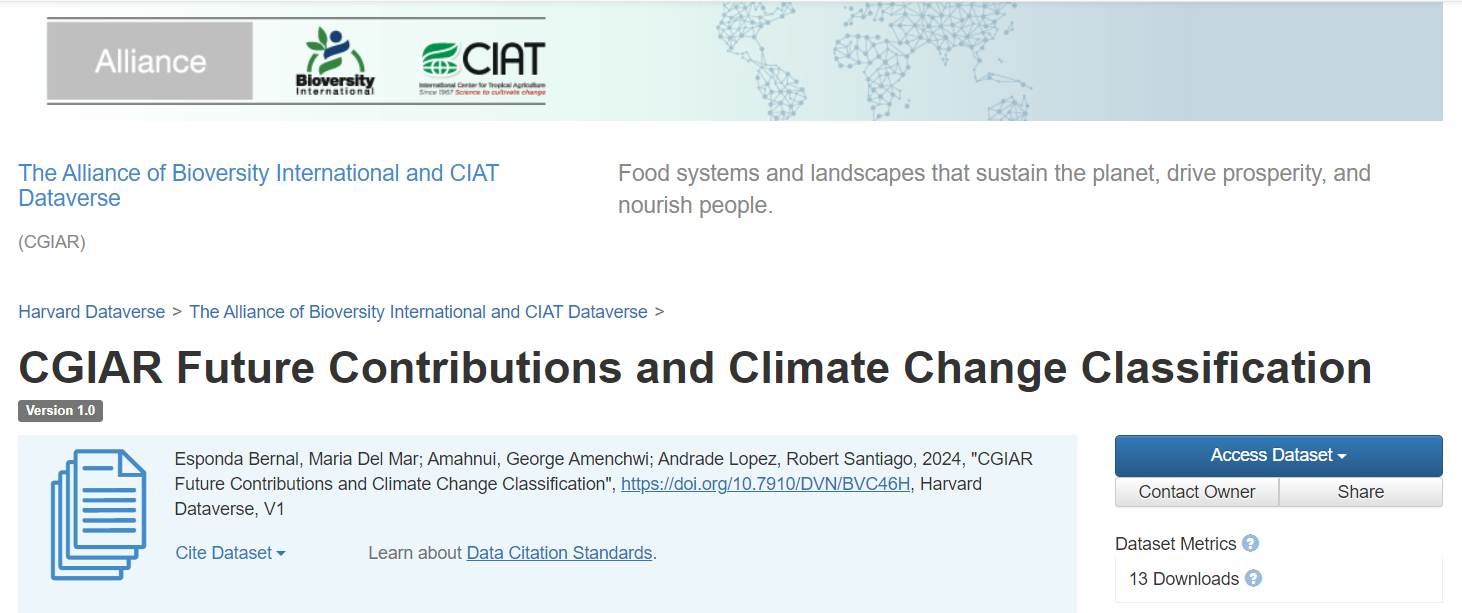CGIAR Future Contributions and Climate Change Classification
This document encompasses the Investment Prospectus for the 32 initiatives planned for 2022-2024, categorized based on their relationship with climate change approaches.
Methodology: We conducted a comprehensive review of 32 CGIAR initiatives explicitly designed to yield a tangible and enduring positive impact across five crucial areas, with a particular focus on climate change mitigation and adaptation. Through extensive debates and rounds of discussions, we categorized the initiatives into mitigation, adaptation, or both, specifying whether their relationship was direct or indirect.
Mitigation, as defined by the IPCC, encompasses human interventions to reduce sources or enhance sinks of GHGs. Similarly, adaptation, according to the IPCC, refers to the process of adjusting to current or anticipated climate conditions and their effects. In human systems, adaptation aims to moderate or avoid harm and exploit beneficial opportunities arising from climate change.
In simpler terms, when discussing a direct relationship in innovation, it implies that the project has the potential to positively impact greenhouse gas emissions or climate change effects as it unfolds. Conversely, when referring to an indirect relationship, it means that the innovation does not have an immediate impact but can serve as a tool later to support the implementation of a direct project or initiative that does have a direct impact on emissions or climate effects (2024-01)

